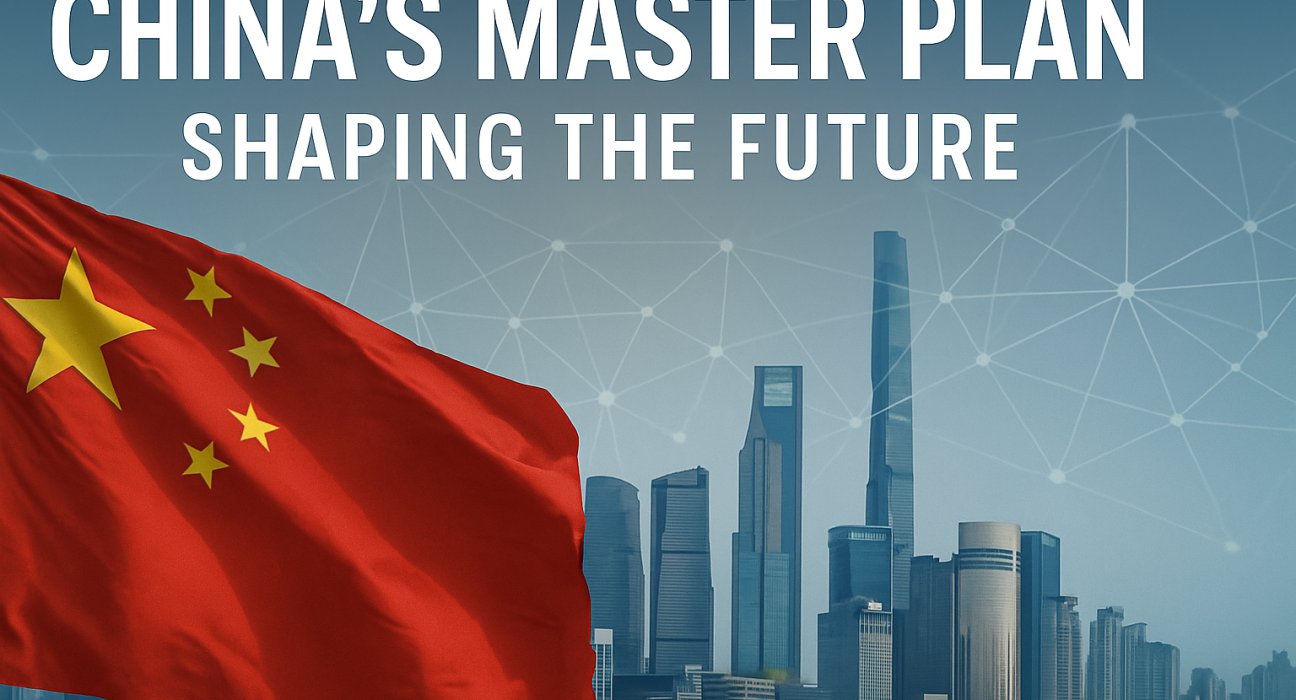Over the past several decades, China has moved from being a largely agrarian society into one of the world’s most powerful economic and geopolitical actors. Behind this transformation lies what many observers describe as a carefully crafted “master plan”—a combination of long-term economic strategies, technological ambitions, and global partnerships designed to secure the country’s position in the 21st century. While the term “master plan” can imply a level of precision that reality rarely delivers, it captures the spirit of China’s attempt to shape not only its own future but also the world’s.
Economic Vision and Domestic Goals
China’s economic blueprint has long emphasized growth through modernization, infrastructure, and manufacturing strength. Initiatives like “Made in China 2025” aim to shift the country from being the “world’s factory” into a leader in advanced industries, including robotics, artificial intelligence, renewable energy, and biotechnology. At the same time, policies such as “dual circulation” seek to balance domestic consumption with international trade, reducing reliance on external markets and insulating the economy from global shocks.
Urbanization, technological integration, and the expansion of a middle class are also central pillars of this plan. By boosting domestic demand, China hopes to reduce vulnerabilities associated with shifting global trade policies and foster sustainable, innovation-driven growth.
Global Engagement and Influence
Externally, China’s Belt and Road Initiative (BRI) remains its most ambitious global project. Spanning Asia, Africa, Europe, and beyond, the BRI invests in infrastructure, ports, railways, and energy pipelines. For participating nations, these investments can mean vital development opportunities, but they also raise debates about debt sustainability, strategic dependency, and environmental impact.
China’s growing role in international institutions further reflects its desire to help shape global norms. From the United Nations to new financial platforms such as the Asian Infrastructure Investment Bank, Beijing seeks a voice that reflects its weight in the international system. This positioning underscores China’s intention to not only participate in global governance but also, at times, to reshape it.
Technology and the Future of Power
At the core of China’s forward-looking strategy is technology. Beijing views digital infrastructure, artificial intelligence, and space exploration as arenas where future power will be defined. Massive state support for research and development, combined with a fast-growing tech sector, positions the country as a rival to other innovation centers.
Efforts to set international standards in 5G networks, digital payment systems, and e-commerce also highlight China’s intent to extend influence in domains that shape everyday life. As the world debates issues of data security, digital sovereignty, and technological ethics, China’s approaches carry implications well beyond its borders.
Challenges and Tensions
China’s master plan, however, is not without obstacles. Demographic shifts, including an aging population, present long-term economic challenges. Trade tensions, particularly with the United States, reveal the risks of technological competition. Domestically, questions about social stability, environmental sustainability, and economic inequality remain pressing.
Globally, China’s growing assertiveness often generates friction with other powers, leading to both cooperation and confrontation. How these dynamics evolve will determine whether China’s strategy succeeds in shaping a more multipolar world or whether it sparks greater geopolitical rivalry.
A Future in the Balance
Ultimately, China’s “master plan” reflects both ambition and uncertainty. It represents a vision of modernization, global engagement, and technological leadership, but its success depends on navigating domestic challenges and international skepticism. For some, it signals an opportunity to build new bridges of cooperation; for others, it raises concerns about competition and influence.
As China pursues this course, the world will continue to grapple with the consequences—balancing engagement with caution, and recognizing that the future being shaped is one in which no single nation holds all the answers.
China’s 15th Five-Year Plan: What We Know So Far — China Briefing China Briefing
